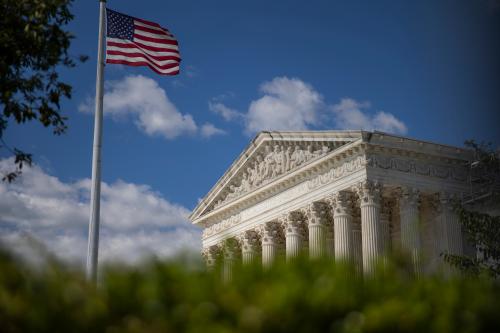Congress is currently wrapping up work on what will be the final spending bill of the Obama administration—a continuing resolution to keep discretionary federal programs running through the end of April 2017. The debate over the measure, while relatively tame on the whole, has not been without some stumbling blocks, including provisions related to health benefits for retired coal miners and to the nomination of General James Mattis to serve as Secretary of Defense in the Trump administration. In general, however, this last funding bill provides an anti-climax to the long-running series of confrontations between the Obama administration and Republicans in Congress, many of which seemed to bring the nation to the brink of fiscal catastrophe. Now is nevertheless a good time to reflect on the many “fiscal fights” between President Obama and congressional Republicans over the past six years, which we do in a new interactive timeline that recounts each of the debates in detail and provides resources (many by Brookings authors) to understand them.
Here are four major takeaways from our retrospective:
- Fiscal fights were a regular feature of the last six years. Since January 2011, each year has included at least one major budgetary deadline that created significant conflict between Congress and the White House. These included the August 2011 showdown over the debt limit; the fiscal cliff in 2012; 2013’s government shutdown and 2014’s near-miss on the same; the confrontation that ended with Speaker John Boehner’s resignation in 2015; and the pre-election debate over funding for aid to Flint, Michigan, and Zika outbreak efforts in 2016.
- President Obama and Congress frequently went right up against deadlines to complete necessary budgetary work. The fiscal fights of the past six years were not just frequent—they were often frenzied as well. Negotiations between congressional Republicans and Democrats, and between Congress and the White House, often ran right up to the eleventh hour.
- To understand these fiscal fights is to understand what Congress has been up to for the past six years. For much of this period of divided government, budgetary matters have represented the core of what Congress and the president have been able to accomplish legislatively. Because all parties involved have treated them as “must pass” measures, they have been frequent targets of high-profile policy goals tangential to the budget process. In 2013, for example, Senator Ted Cruz engineered a government shutdown over objections to the Affordable Care Act. Confrontations over President Obama’s executive actions on immigration (2014) and federal support for Planned Parenthood (2015) made similar appearances in fiscal fights.
- Divided government influenced recent fiscal fights. Unified government may not eliminate them. For some congressional Republicans—especially members of the House Freedom Caucus and similarly-minded senators—budget battles have represented a key mechanism for influence over the past six years. While the presence of a fellow partisan in the White House may reduce their appetite for intra-party conflict, there may also be more confrontations to come. Democrats, meanwhile, will be faced with their own strategic choices. Will they reprise their 2015 efforts to obstruct spending bills next year unless Republicans commit to equal treatment of defense and non-defense discretionary spending? Will they continue their commitment to the notion that the debt limit should not be used as a point of leverage, or will they, like the minority parties for many decades before them, treat debt ceiling votes as an opportunity to make life difficult for the White House?
However fiscal fights end up playing into the Trump administration and beyond, we hope our Fiscal Fights timeline and the supplemental resources it links to will be a valuable resource to all those seeking to understand the dynamics of American government in the 2010s.








Commentary
The final fiscal fight of the Obama administration—and its many predecessors
December 8, 2016